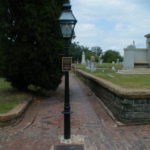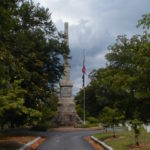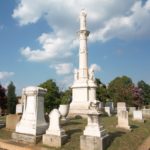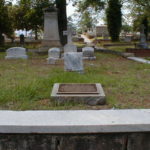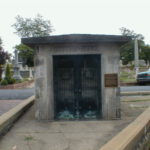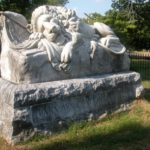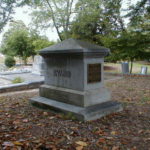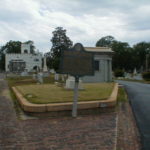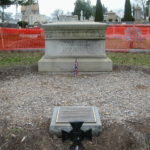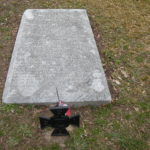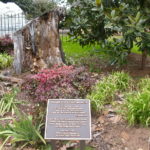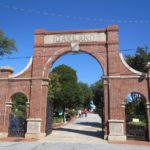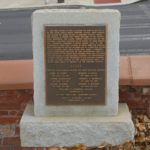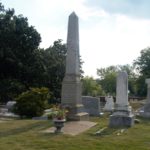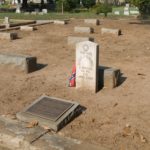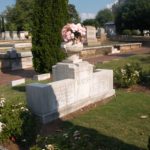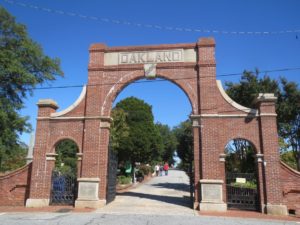 Oakland Cemetery is one of the largest cemetery green spaces, in Atlanta, Georgia, U.S. Founded as Atlanta Cemetery in 1850 on six acres (2.4 hectares) of land southeast of the city, it was renamed in 1872 to reflect the large number of oak and magnolia trees growing in the area. By that time, the city had grown and the cemetery had enlarged correspondingly to the current 48 acres (190,000 m2). Since then, Atlanta has continued to expand so that the cemetery is now located in the center of the city. Oakland is an excellent example of a Victorian-style cemetery, and reflects the “garden cemetery” movement started and exemplified by Mount Auburn Cemetery in Massachusetts.
Oakland Cemetery is one of the largest cemetery green spaces, in Atlanta, Georgia, U.S. Founded as Atlanta Cemetery in 1850 on six acres (2.4 hectares) of land southeast of the city, it was renamed in 1872 to reflect the large number of oak and magnolia trees growing in the area. By that time, the city had grown and the cemetery had enlarged correspondingly to the current 48 acres (190,000 m2). Since then, Atlanta has continued to expand so that the cemetery is now located in the center of the city. Oakland is an excellent example of a Victorian-style cemetery, and reflects the “garden cemetery” movement started and exemplified by Mount Auburn Cemetery in Massachusetts.
The original 6 acres (24,000 m2) of Oakland remains one of the oldest historical plots of land in Atlanta, most of the rest of the city having been burned in 1864. Because of its age and location, the cemetery directly reflects the history and changing culture of the City of Atlanta and the significant events it has seen. Names of Atlanta streets, buildings, parks, subdivisions, and more can be found within the cemetery gates. An estimated 70,000 people are interred at Oakland, and while the last plots were sold in 1884, there are still regular burials today. These are largely conducted on family-owned plots or areas owned by Atlanta (one of the most recent being former mayor Maynard Jackson, whose plot was contributed by the city).[1]
Confederate section
The Confederate section of Oakland is home to an estimated 6,900 burials, of which about 3,000 are unknown. During the Civil War, Atlanta was a major transportation and medical center for the Southern states. Since several of the largest military hospitals in the area were within a half mile (800 m) from Oakland, many soldiers who died from their wounds were buried here. Shortly after the war ended, a few thousand fallen soldiers from the Atlanta Campaign who were previously buried in battleground graves were moved to the Confederate grounds in Oakland. The area is marked by a large monument known as the Confederate Obelisk. This 65 foot (20 m) tall obelisk is made from granite quarried from Stone Mountain and was dedicated on April 26, 1874, the anniversary of Joseph E. Johnston’s surrender to William Sherman. For a number of years, the Confederate Obelisk was the tallest structure in Atlanta. To the northwest, very close to the obelisk itself, are buried four Confederate generals, John B. Gordon, Lucius J. Gartrell, Clement A. Evans, and William Wright. To the south of the obelisk is a large section of marked military graves. Of special note are the 16 marked graves of Union soldiers that are buried alongside Confederate soldiers. This practice was very uncommon at the time, but was likely done at Oakland due to dwindling burial space. Also located in the Confederate section is one of the most striking monuments at Oakland, the Lion of the Confederacy, or Lion of Atlanta. The lion, which guards a field containing the remains of unknown Confederate dead, was commissioned by the Atlanta Ladies Memorial Association and carved by T. M. Brady in 1894 out of the largest piece of marble quarried from north Georgia up to that time. Though Brady claimed that the design was original, with a few exceptions it is actually a near copy of the Swiss Lion of Lucerne.[2]
Bell Tower
Before the Bell Tower was constructed in 1899, a farmhouse owned by James E. Williams, who would later be mayor of Atlanta, stood in the spot. From this location, General John B. Hood directed Confederate forces in the Battle of Atlanta on July 22, 1864. The Bell Tower building as it stands today was originally the sexton’s office and living quarters. Atop the tower is a bell that was formerly used to signal for workers to gather at that location, and for funerals. The basement was used as a vault for storing coffins awaiting burial. In 1998 the Bell Tower building saw extensive restoration and now serves as the offices of the Historic Oakland Foundation as well as the cemetery’s visitor center.
Monuments and Mausolea
As with most cemeteries of comparable size and age, Oakland contains numerous monuments and mausolea that are often outstanding examples of art and symbolism, or are of great historical significance. In the southeast area of the cemetery is a historical marker describing the events surrounding the Great Locomotive Chase, in which Union raiders stole the locomotive General with the intent of cutting vital telegraph lines. They were captured by Confederate forces and seven of them were hanged in Oakland and temporarily interred there before being moved to the National Cemetery at Chattanooga. Near the Bell Tower lies a monument dedicated by the City of Atlanta to its first mayor, Moses Formwalt, who was also the youngest Atlanta mayor at 28 years old.
- William Fuller Grave
- Margaret Mitchell Grave
- Lucius J. Gartrell Grave
- Joseph E. Brown Grave
- John B. Gordon Grave
- Franklin Garrett Grave
- Clement A. Evans Grave
- Alfred Iverson Grave
- Alexander H. Stephens Grave

